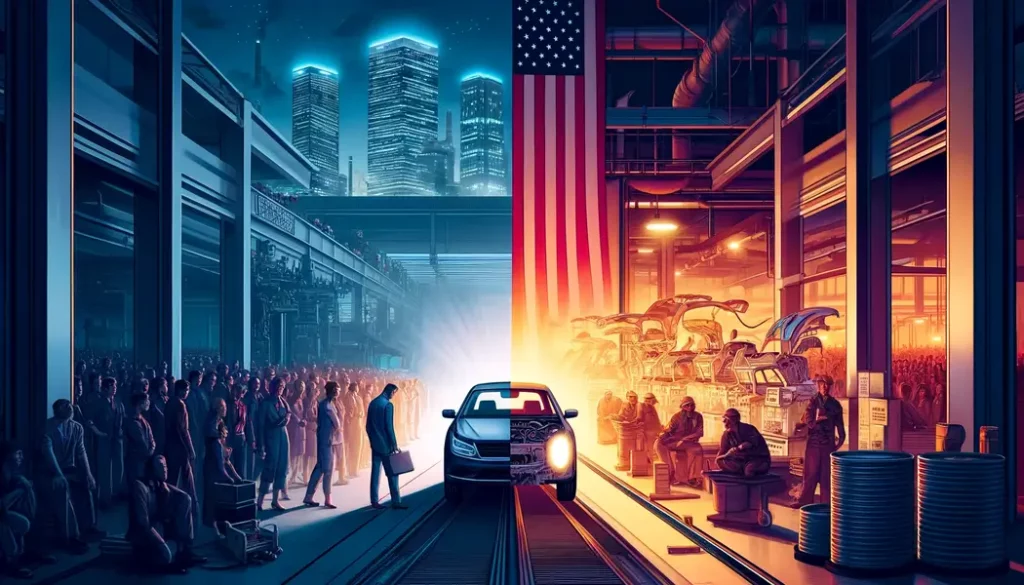In Brillion, Wisconsin, a quiet transformation unfolds at the Ariens Company, where the making of iconic orange snow blowers and lawnmowers has slowed.
Dan Ariens’ decision to lay off workers and halt hiring is a stark illustration of a larger trend: while the U.S. job market flourishes, the manufacturing sector remains stagnant.
This discrepancy between the bustling job market and the static state of factory employment highlights the uneven benefits of economic growth.

Why the US Employment Boom is Leaving Factory Workers Behind (PDF)
The Root of the Issue: Economic Shifts and Policy Changes
The story of U.S. manufacturing is one of complexity and contradiction. Factors such as high interest rates, a slowing economy, and a post-COVID decrease in demand for manufactured goods paint a picture of a sector at a crossroads.
Despite legislative efforts aimed at rejuvenating manufacturing, the sector has yet to see significant job growth. This sluggishness in factory job creation is a testament to the challenges of adapting to economic shifts and policy changes.
Manufacturing’s Decline: A Historical Perspective
The narrative of American manufacturing, once the pulsing heart of the nation’s economy, has gradually dimmed, overshadowed by the relentless march of progress.
The evolution from an era dominated by bustling factories to one defined by digital services and automation is a testament to the country’s shifting economic landscape.
This transformation, fueled by technological advancements and the lure of global markets, has significantly altered the employment tapestry.
While the dwindling numbers in manufacturing roles signal a broader economic pivot, they also underscore the profound effects of such shifts on communities and individuals whose identities are intertwined with the factory floors of yesterday.
Hope on the Horizon: Adaptation and Resilience
Despite the challenges, there are signs of resilience within the manufacturing sector. Companies like Vermeer in Pella, Iowa, continue to hire, showcasing an ability to adapt and thrive even in uncertain times.
The construction of new factories, fueled by recent legislation, offers hope for future job creation in manufacturing.
These developments suggest that, while the path may be rocky, there is potential for growth and renewal in American manufacturing.
The Human Element: Communities in Transition
The narrative of factory workers in the U.S. is deeply human. It’s about the families and communities navigating the realities of a shifting economy.
As factory jobs become scarcer and the nature of work evolves, the impact on small towns and rural areas is profound.
This transition raises critical questions about the future of work, community resilience, and the social fabric of manufacturing towns across America.





